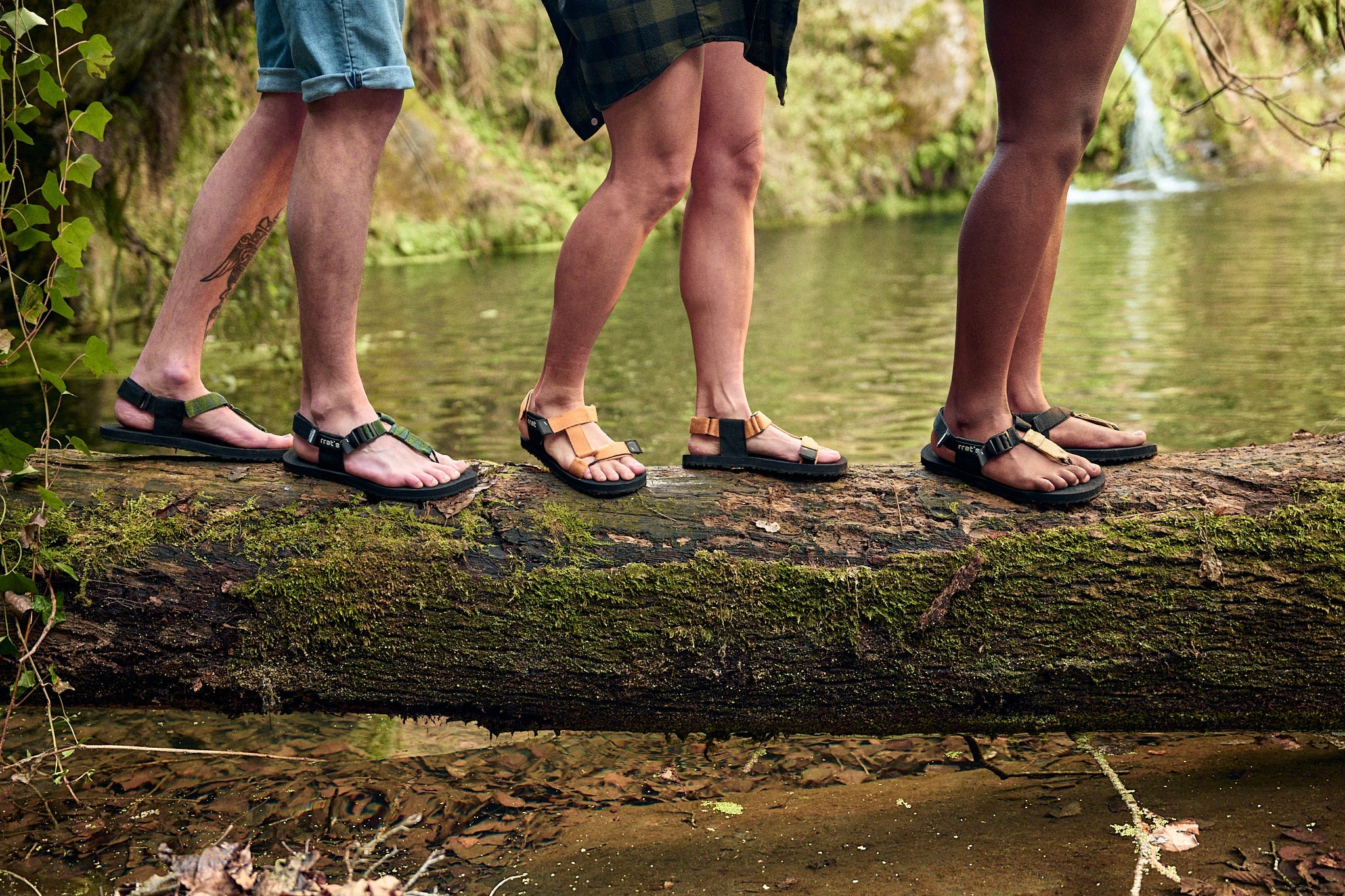The world of technical and adventure footwear is undergoing a transformation, and one of the most interesting debates is biodegradable vs. recycled. In this journey toward more conscious consumption, RRAT's Outdoor sandals have become a benchmark thanks to their sustainable approach and barefoot design.
In this blog, we'll analyze the differences between biodegradable and recycled materials in the outdoor footwear sector.
What are biodegradable materials?
When we talk about biodegradable materials, we refer to those that, after completing their life cycle, decompose naturally thanks to the action of microorganisms, leaving no toxic residue. They are common in sectors such as packaging, but they still pose significant challenges in outdoor footwear.
In sandals, the use of biodegradable materials seeks to reduce long-term waste. However, their durability is often lower, which can create a dilemma: if a shoe wears out quickly, more pairs must be produced, which means more resource consumption and transportation.
The biodegradable vs. recycled debate becomes interesting here, as it's not enough for a material to simply disappear into nature; it must also be functional, technical, and durable enough to withstand the demands of trekking and hiking .
What are recycled materials in sandals?
The recycled materials used in sandals come from resources that have already been used and are reintroduced into the production cycle. This means less extraction of raw materials, less waste, and a lower impact on the carbon footprint.
In the case of outdoor footwear, recycled materials offer a clear advantage: they allow for the manufacture of durable, technical products, as durable as conventional ones, but with a reduced environmental impact.
RRAT's sandals integrate recycled materials into various components, achieving a balance between lightness, comfort, and sustainability. This makes them an alternative aligned with today's demands for eco-friendly and responsible travel .
The role of 3D PP-CSLN tapes in RRAT's outdoor sandals
One of the most innovative elements of RRAT's mountain sandals is their 3D PP-CSLN straps , designed to offer maximum resistance and comfort, but with a sustainable focus.
These ribbons, developed using a cleaner production process, are an example of the circular economy, as they can be easily recycled as many times as desired . Compared to traditional materials like cotton, they offer multiple technical and environmental advantages:
- Greater strength and durability than cotton.
- Colors that do not wear off , even after intensive use.
- They repel water, moisture and dirt , something key in mountain and adventure environments.
- Easy to wash and maintain, which extends the life of the footwear.
- No pilling , keeping it looking like new.
- High chemical resistance : withstands acids and alkalis.
- Extra safety , since they do not burn.
- Compatible with technical treatments such as fire retardants or antibacterials.
Thanks to these properties, RRAT's Outdoor mountain sandals are not only at the forefront of comfort and performance, but also in sustainability, proving that a recyclable material can be as functional as, or more so than, biodegradable ones.
Biodegradable vs. recycled: advantages and challenges in outdoor footwear
The dilemma between biodegradable and recycled materials doesn't have a single answer. Both types of materials have benefits, but also limitations:
- Biodegradable materials : These reduce long-term waste, but they tend to be less durable and require more frequent replacement. This can be impractical for outdoor footwear.
- Recycled materials : They extend the life cycle of resources, offering strength, durability, and ease of maintenance. They represent a more viable solution for demanding activities such as trekking or climbing.
In this sense, RRAT's Outdoor and its technical models focus primarily on recycling and process innovation, ensuring that each pair of sandals not only accompanies you on your adventure, but also forms part of a more responsible lifestyle.
RRAT's Outdoor Sandals: Sustainability in Every Step
RRAT's Outdoor's commitment to sustainability goes beyond a simple marketing concept. All of its sandals share the same foundation: they are mountain-ready, minimalist, and versatile, capable of performing equally well on technical terrain, in the city, or at the beach.
In all cases, innovation is reinforced with 3D PP-CSLN straps , which provide durability, comfort, and a sustainable production process aligned with the circular economy. Thanks to them, the sandals maintain their durability, resist color loss, repel moisture, and are easier to wash, extending their lifespan without compromising respect for the planet.
In this way, RRAT's Outdoor offers a coherent collection where each model responds to different needs, but always under the same philosophy: fewer pairs, more durable, and designed with recyclable materials that reduce the environmental footprint.
Choosing better for a greener future
The debate over biodegradable vs. recycled outdoor footwear invites us to reflect on what sustainability really means.
While biodegradable bags have an obvious appeal due to their return to nature, recycled bags offer a more practical, durable solution suited to demanding activities such as trekking or long trips.
Ultimately, it's a choice that goes beyond fashion: it's a commitment to the planet and to our way of living adventure. Because every step counts, and doing so in RRAT's Outdoor sandals means walking toward a more sustainable future.


